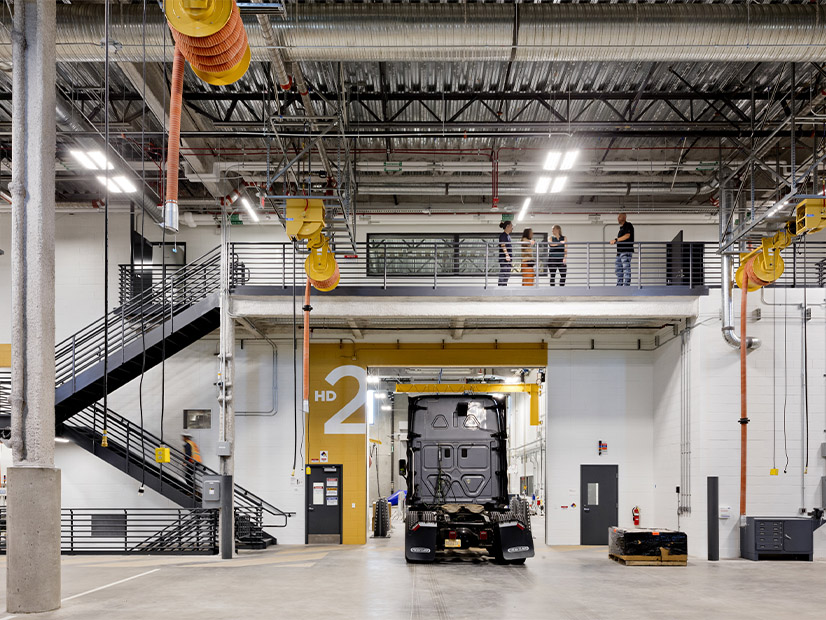The California Air Resources Board had a big year in 2022, adopting the Advanced Clean Cars II regulation, which bans the sale of most gas-powered cars starting in 2035.
It also approved a climate change scoping plan that sets a course for the state to reach carbon neutrality by 2045. (See Calif. Adopts Rule Banning Gas-powered Car Sales in 2035; CARB Approves Plan to Reach Net Zero by 2045.)
CARB will have another busy year in 2023.
The agency is expected to approve an Advanced Clean Fleets (ACF) regulation aimed at accelerating the transition to zero-emission medium and heavy-duty trucks. The regulation’s goal is to achieve a zero-emission truck and bus fleet in California “where feasible” by 2045 and much sooner for some vehicles such as last-mile delivery and drayage trucks.
The CARB board held a hearing in October on the proposed ACF regulation, which is expected to return for final approval in early 2023.
CARB is also re-examining its low-carbon fuel standard (LCFS) with an eye toward increasing the stringency of carbon-intensity targets for 2030. The regulation sets carbon intensity benchmarks for transportation fuels, which decrease over time. Fuels with a carbon intensity less than the benchmark generate credits that can be purchased by providers of fuels that have a carbon intensity above the benchmark.
The potential increased stringency of LCFS is important as CARB’s new scoping plan sets a target of reducing GHG emissions to 48% below 1990 levels by 2030. That exceeds a statutory goal of a 40% emissions reduction by 2030.
CARB held several workshops in 2022 to discuss potential changes to LCFS. Those discussions will continue in 2023.
Also in 2023, CARB will continue working on a strategy to achieve net-zero emissions for cement used within California by 2045. The strategy, which is due by July 1, is a requirement of Senate Bill 596 passed in 2021.
And last year’s SB 905 requires CARB to establish a program to evaluate the safety and viability of carbon capture, utilization and storage technologies. Work on the program will start this year.
CARB Executive Officer Steven Cliff is expected to outline the agency’s priorities for 2023 during the January board meeting.
Another issue CARB will tackle in the new year is how the Environmental Justice Advisory Committee can continue on an ongoing basis. The EJAC was convened in 2021 to work on the 2022 scoping plan. EJAC members represent communities most heavily impacted by air pollution, including low-income or minority populations.
In the past, the EJAC’s work ended with completion of the scoping plan. But CARB Chair Liane Randolph has committed to keeping the EJAC going so the panel can advise the agency on scoping plan implementation.
CARB staff have proposed an ongoing EJAC with 11 members that would meet twice quarterly. During development of the 2022 scoping plan, the EJAC had as many as 21 members and often met two days a month. CARB staff said it’s been tough keeping up with the work required for that schedule.
But during the committee’s Nov. 30 meeting, EJAC member John Kevin Jefferson said the group will have even more work to do as the scoping plan is implemented. He suggested that CARB assign more staff to work with the committee.
“The pace needs to actually increase as opposed to decrease,” Jefferson said. “There’s a lot of work to do.”



